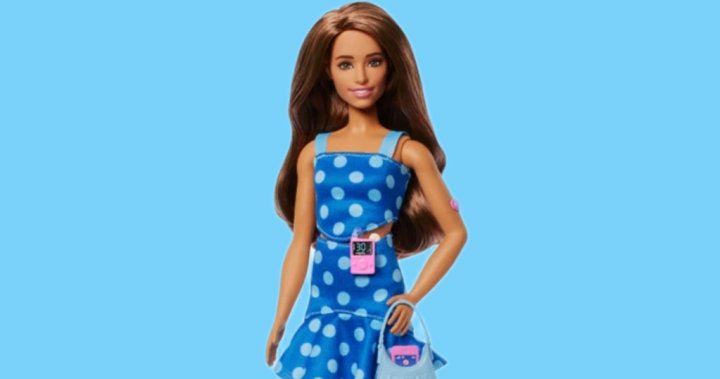The iconic Barbie doll is getting a new addition, and this time, it’s one that reflects the realities faced by millions. Mattel has unveiled a Barbie with Type 1 diabetes, complete with a miniature pink glucose monitor and insulin pen, sparking both praise and nuanced discussion about representation and responsible design.
The doll is part of the Barbie Fashionistas line, which aims to showcase a broader range of body types, skin tones, and abilities. This isn’t the first time Barbie has tackled health-related themes; previous dolls have featured prosthetic limbs, hearing aids, and vitiligo. However, the inclusion of Type 1 diabetes marks a significant step into representing a complex, chronic condition that requires constant management.
“Our goal is to highlight all different kinds of beauty and showcase inclusivity in our dolls,” explained a Mattel spokesperson. “We worked closely with diabetes experts to ensure the accuracy and sensitivity of the accessories. We want children who live with Type 1 diabetes to see themselves reflected in Barbie, and for all children to learn about and develop empathy for those living with this condition.”
The response has been largely positive, with many praising Mattel for its commitment to diversity. Parents and individuals with Type 1 diabetes have taken to social media to express their gratitude.
“As a mom of a child with T1D, I’m so grateful to see this representation,” wrote one user on X.com. “My daughter is going to be so excited to see a Barbie just like her!”
However, the launch hasn’t been without its critics. Some have voiced concerns about the potential for misrepresentation or trivialization of a serious illness. A key point of contention is the responsibility that comes with portraying a medical condition, particularly to young children. The contrast between the potentially carefree world of Barbie and the daily realities of managing Type 1 diabetes creates a point of tension.
Dr. Sarah Chen, a pediatric endocrinologist, weighed in on the discussion. “It’s wonderful to see this representation, but it’s crucial to remember that Type 1 diabetes is not a fashion accessory,” she stated. “It’s a serious condition that requires constant vigilance and care. Parents should use this doll as an opportunity to educate their children about diabetes in an age-appropriate and sensitive manner.”
One common concern is the accuracy of the representation. Will children understand the importance of proper blood sugar monitoring and insulin administration? Or will they simply see the glucose monitor as another fun accessory? This highlights the need for careful messaging and parental guidance.
Here’s a summary of the key viewpoints:
- Positive Representation: Many appreciate seeing a chronic condition like Type 1 diabetes represented in mainstream media.
- Educational Opportunity: The doll can serve as a valuable tool for teaching children about diabetes and promoting empathy.
- Potential for Misinterpretation: Concerns exist about trivializing the seriousness of the condition.
- Need for Parental Guidance: Parents need to play an active role in educating their children about diabetes in conjunction with the doll.
For some, the issue is deeply personal. One parent, waiting outside a diabetes clinic with her child, shared her thoughts. “It raised more questions than answers,” she said, watching children play nearby. “Will it normalise it? Or will it just become another toy, divorced from the reality? Time will tell.”
Despite these concerns, many believe that the potential benefits of this representation outweigh the risks. The doll can help to destigmatize Type 1 diabetes and create a more inclusive environment for children living with the condition. The synthesis lies in responsible engagement , celebrating the representation while ensuring that the doll sparks meaningful conversations and accurate understanding. Matell should consider partnering with diabetes organizations to provide educational materials and resources to accompany the doll. The doll’s product information website should include a link to more inforamtion.
The Barbie with Type 1 diabetes is set to hit stores nationwide this fall. It remains to be seen how it will be received, but one thing is certain: it has already sparked a vital conversation about representation, responsibility, and the power of toys to shape our understanding of the world. One can even see it as a small, plastic step towards a more inclusive and informed society where kids with these health issues might be less alienated, and where kids who are not similarly affected could, at least, learn some empathy. What could be more pinktastic?
The impact of this doll will depend not only on its design but also on the conversations it generates and the educational resources that accompany it. Is this one of Mattel’s best ideas? Maybe. But that’s up to each one of use to consider.



